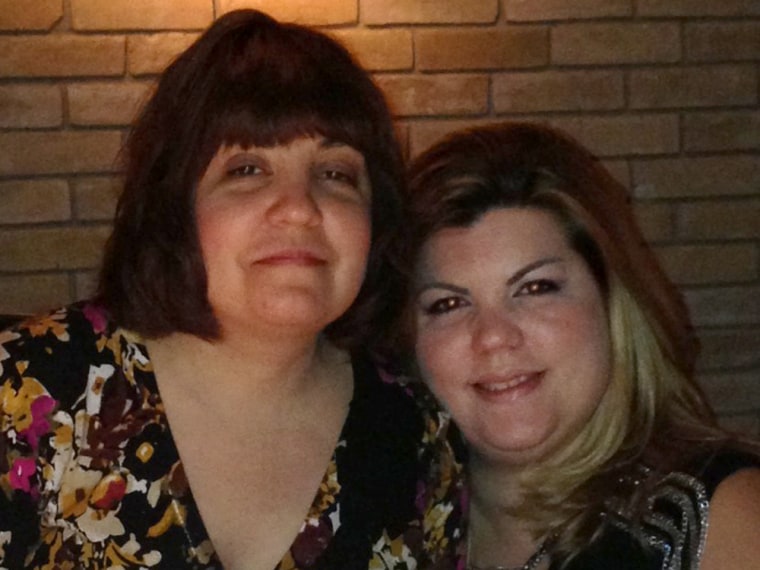Fear, not facts, may be driving young women diagnosed with cancer in one breast to remove them both, despite medical evidence that says it likely won’t improve survival.
That’s the conclusion of a new study that finds that women younger than 40 who opted for a second mastectomy of a healthy breast did so to reduce the perceived risk of another cancer -- even when they knew better. Often, they simply wanted peace of mind.
Researchers say that raises tough questions about the way women are making such agonizing decisions, and points to potential gaps in the conversation between doctors and their patients.
“We’re concerned that the risk is not being effectively communicated,” said Shoshana M. Rosenberg of the Dana-Farber Cancer Institute and the Harvard School of Public Health, who led the study published Monday in the Annals of Internal Medicine. “We’re concerned that some of the anxiety and fears and concerns are not being adequately addressed.”
The worry is different than the one raised by actress Angela Jolie, who had a preventive double mastectomy earlier this year because of a genetic risk for cancer. Doctors are also concerned about women who actually are diagnosed with cancer in one breast and then choose to remove both, whether they have a genetic risk or not.
“In our practice, we’re definitely seeing more and more women coming through the door saying, 'I want to do the bilateral. I want to have both breasts removed,'” said Dr. Judy C. Boughey, a breast cancer surgeon at the Mayo Clinic in Rochester, Minn.
Rates of women opting for what’s known as contralateral prophylactic mastectomy, or CPM, have skyrocketed in recent years, particularly for the youngest breast cancer patients, experts say.
Since the late 1990s, CPM rates have quadrupled from about 4 percent to 6 percent of patients opting to remove a healthy breast -- to between 11 percent and 25 percent, researchers said.
That’s despite evidence that shows the actual risk of getting cancer in the second breast is very low -- about 2 percent to 4 percent within five years -- and that the operation may improve survival in less than 10 percent of the breast cancer population.
In the new study, the largest to date to examine how women who’d undergone the surgery made decisions and evaluated risk, researchers surveyed 123 women, most with Stage I or Stage II breast cancer, including those with and without genetic risks for the disease.
Only 18 percent of those surveyed indicated that women with breast cancer who undergo CPM live longer than those who don’t -- but 98 percent of the women said they had their surgery to decrease their risk. And 95 percent said they did it for peace of mind.
“Despite knowing that CPM does not clearly improve survival, women who have the procedure do so, in part, to extend their lives,” researchers wrote. “Many women overestimate their actual risk for cancer in the unaffected breast.”
The researchers concluded that unfounded fears may be propelling women to choose surgery without considering potential complications -- and without fully weighing all of their options. Women who have both breasts removed rather than just one are at twice the risk for wound complications including bleeding, infection and other problems, nearly 6 percent vs. about 3 percent, according to a July study in the Annals of Surgical Oncology.
“We think it’s particularly important to look at it in young women because they have unique issues and unique psycho-social concerns,” Rosenberg said. “You’re making a huge decision that could affect your short term health, for sure, but your long term health as well.”
But some women who have had the surgery -- including those without genetic markers for breast cancer -- said they knew exactly what the risks were and they wanted the operation anyway.
“It’s fear, yes, but I don’t think it’s unfounded fear,” said Katherine Perez, 37, a lawyer from Edinburg, Texas, who was diagnosed with Stage I breast cancer in March and had both breasts removed in April. “I think that not taking an aggressive approach is what costs a lot of people’s lives.”
Perez watched her mother die of breast cancer and began screening at age 18 because of her family risk of the disease. When she actually was diagnosed with cancer, she knew immediately what she’d do. The same was true for her sister, Gina Garcia, 44, who was diagnosed this summer and had CPM surgery this month.
“When you’ve been through what I’ve been through, the fear is not unfounded,” Perez said.
Like Perez, many patients conclude that if they have cancer, they want to endure just one surgery. Others worry that their breasts won’t match after reconstructive surgery if they don’t remove both.
Still others are influenced by a society that seems to root for removal of both breasts, said Dr. Isabelle Bedrosian, a surgeon at the University of Texas MD Anderson Cancer Center who did the operation for Perez.
“The culture says: ‘What’s the big deal? You’re going to get it reconstructed anyway,” she said.
Better communication between doctors and patients would help ensure that women are making informed decisions and not acting merely out of fear, Bedrosian said.
“And then, if that’s the choice they want to move forward with, we honor that choice,” she said.
JoNel Aleccia is a senior health reporter with NBC News. Reach her on Twitter at @JoNel_Aleccia or send her an email.
